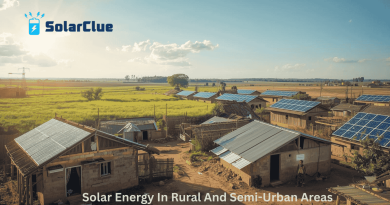A Comprehensive Guide to Energy Terminologies in India
In the dynamic realm of India’s energy sector, numerous energy terminologies and acronyms shape the landscape. Understanding these terms is crucial for navigating the complexities of energy storage, distribution, and management. Let’s embark on a journey through the alphabet soup of energy-related abbreviations.
Table of Contents
- 1 AEML: Adani Energy Mumbai Limited
- 2 AGC: Automatic Generation Control
- 3 AGF: Advanced Grid Functions
- 4 APSPDCL: Andhra Pradesh Southern Power Distribution Company Limited
- 5 AT&C: Aggregate Technical & Commercial
- 6 BESCOM: Bangalore Electricity Supply Company Limited
- 7 BESS: Battery Energy Storage System
- 8 BMS: Battery Management System
- 9 BU: Billion Unit
- 10 CAES: Compressed Air Energy Storage
- 11 CBA: Cost-Benefit Analysis
- 12 CEA: Central Electricity Authority
- 13 CERC: Central Electricity Regulatory Commission
- 14 CESC: Calcutta Electricity Supply Company
- 15 C&I: Commercial & Industrial
- 16 DISCOM: Distribution Company
- 17 DoD: Depth of Discharge
- 18 DG: Diesel Generator
- 19 DR: Demand Response
- 20 DSM: Demand Side Management
- 21 DT: Distribution Transformer
- 22 EHV: Extra High-Voltage
- 23 ESCO: Energy Service Company
- 24 ESIT: Energy Storage India Tool
- 25 ESS: Energy Storage System
- 26 Roadmap for India: 2019-2032
- 27 EV: Electric Vehicle
- 28 E2W: Electric 2-Wheelers
- 29 E3W: Electric 3-Wheelers
- 30 FRAS: Fast Response Ancillary Service
- 31 GCF: Green Climate Fund
- 32 GDP: Gross Domestic Product
- 33 GW: Gigawatt
- 34 HVAC: Heating Ventilation and Air Conditioning
- 35 HT: High Tension
- 36 ICE: Internal Combustion Engine
AEML: Adani Energy Mumbai Limited
Adani Energy Mumbai Limited is a significant player in the energy sector, particularly in Mumbai. As a part of the Adani Group, AEML contributes to the generation, distribution, and management of electricity in the financial capital. This is one of the most important energy terminologies.
AGC: Automatic Generation Control
Automatic Generation Control is a critical aspect of power system management, ensuring real-time adjustments to generation levels to maintain the balance between electricity supply and demand. So, This is also one among the important energy terminologies.
AGF: Advanced Grid Functions
Advanced Grid Functions refer to the sophisticated capabilities integrated into power grids, enhancing efficiency, reliability, and adaptability to the evolving energy landscape.
APSPDCL: Andhra Pradesh Southern Power Distribution Company Limited
APSPDCL plays a pivotal role in the distribution of power in southern Andhra Pradesh, contributing to the electrification and development of the region. It is one of the most commonly used energy terminologies in India.
AT&C: Aggregate Technical & Commercial
Aggregate Technical & Commercial losses represent the total losses in electricity distribution systems, encompassing technical losses during transmission and distribution, as well as commercial losses due to theft and inefficiencies.
BESCOM: Bangalore Electricity Supply Company Limited
BESCOM is a key player in the power distribution sector, serving the electricity needs of Bangalore. The company plays a crucial role in ensuring a reliable power supply for the city’s residents and businesses.
BESS: Battery Energy Storage System
Battery Energy Storage Systems are instrumental in storing electrical energy for later use. They contribute to grid stability, enable the integration of renewable energy sources, and enhance overall system reliability.
BMS: Battery Management System
The Battery Management System is a crucial component in energy storage systems, responsible for monitoring and optimizing the performance, health, and safety of batteries.
BU: Billion Unit
BU, or Billion Unit, is a unit of measurement for electricity consumption or generation. It provides a standardized metric to assess the scale of energy transactions or usage.
CAES: Compressed Air Energy Storage
Compressed Air Energy Storage is a technology that stores energy in the form of compressed air. It is an innovative method for managing fluctuating energy supply and demand.
CBA: Cost-Benefit Analysis
Cost-Benefit Analysis is a systematic evaluation method used to assess the economic feasibility of a project or initiative. In the context of the energy sector, it helps determine the optimal balance between costs and benefits.
CEA: Central Electricity Authority
The Central Electricity Authority is a statutory organization responsible for formulating policies and coordinating activities related to the planning and development of the electricity sector in India.
CERC: Central Electricity Regulatory Commission
The Central Electricity Regulatory Commission is a regulatory body overseeing the power sector and adjudicating disputes among market participants. It plays a crucial role in ensuring a fair and transparent electricity market.
CESC: Calcutta Electricity Supply Company
The Calcutta Electricity Supply Company is a prominent utility company serving the electricity needs of Kolkata and its surrounding areas. It plays a vital role in the electrification and development of the region.
C&I: Commercial & Industrial
Commercial & Industrial consumers form a significant segment of electricity users. Understanding their energy needs and patterns is essential for effective energy planning and management.
DISCOM: Distribution Company
Distribution Companies, or DISCOMs, are entities responsible for distributing electricity to end-users. They play a crucial role in ensuring a reliable and efficient supply of electricity.
DoD: Depth of Discharge
Depth of Discharge is a metric used in battery management, representing the percentage of a battery’s capacity that has been discharged relative to its total capacity. It is a key factor in optimizing battery lifespan.
DG: Diesel Generator
Diesel Generators are backup power sources often used in areas with unreliable electricity supply. They play a crucial role in ensuring continuous power during outages.
DR: Demand Response
Demand Response is a strategy to manage electricity consumption by adjusting demand based on real-time conditions. It helps balance supply and demand and enhances overall grid stability.
DSM: Demand Side Management
Demand Side Management involves various strategies to modify consumer demand for electricity, optimizing energy use and contributing to a more efficient and sustainable energy system.
DT: Distribution Transformer
Distribution Transformers are crucial components in electricity distribution networks, facilitating the step-down of voltage for safe and efficient supply to end-users.
EHV: Extra High-Voltage
Extra High-Voltage refers to transmission voltages higher than standard high-voltage levels. It is used for long-distance electricity transmission, reducing energy losses during transport.
ESCO: Energy Service Company
Energy Service Companies provide energy-related services and solutions to optimize energy use and improve efficiency. They play a vital role in promoting sustainable energy practices.
ESIT: Energy Storage India Tool
Energy Storage India Tool is a resource or platform designed to facilitate information sharing, collaboration, and planning in the field of energy storage in India.
ESS: Energy Storage System
Energy Storage Systems encompass a range of technologies designed to store energy for later use. They contribute to grid stability, renewable energy integration, and overall energy resilience.
Roadmap for India: 2019-2032
The Energy Storage System Roadmap for India outlines the strategic plan for the development and deployment of energy storage technologies in the country from 2019 to 2032.
EV: Electric Vehicle
Electric Vehicles are automobiles powered by electricity. The adoption of EVs is a crucial aspect of sustainable transportation and reducing dependence on traditional fossil fuels.
E2W: Electric 2-Wheelers
Electric 2-Wheelers represent a growing segment of electric vehicles, providing an eco-friendly and sustainable alternative to traditional gasoline-powered motorcycles and scooters.
E3W: Electric 3-Wheelers
Electric 3-Wheelers, such as electric rickshaws, contribute to sustainable urban transportation. They offer a cleaner and more efficient alternative to traditional three-wheelers powered by internal combustion engines.
FRAS: Fast Response Ancillary Service
Fast Response Ancillary Service refers to services that provide rapid and precise responses to grid imbalances, contributing to overall grid stability and reliability.
GCF: Green Climate Fund
The Green Climate Fund is a financial mechanism supporting projects, programs, policies, and other activities that address climate change mitigation and adaptation in developing countries.
GDP: Gross Domestic Product
Gross Domestic Product is a key economic indicator representing the total value of goods and services produced within a country’s borders. It provides insights into the economic health and growth of a nation.
GW: Gigawatt
Gigawatt is a unit of power equal to one billion watts. It is commonly used to measure the capacity of large-scale power plants or the total power generation capacity of a country.
HVAC: Heating Ventilation and Air Conditioning
Heating Ventilation and Air Conditioning systems are essential for maintaining comfortable indoor environments. In the context of energy, optimizing HVAC systems contributes to energy efficiency. This is one of the highly used energy terminologies in India.
HT: High Tension
High Tension refers to electricity transmission or distribution at higher voltage levels, typically above 33 kV. It is used for long-distance transmission to reduce energy losses.
ICE: Internal Combustion Engine
Internal Combustion Engines are traditional engines that burn fuel to generate power.



